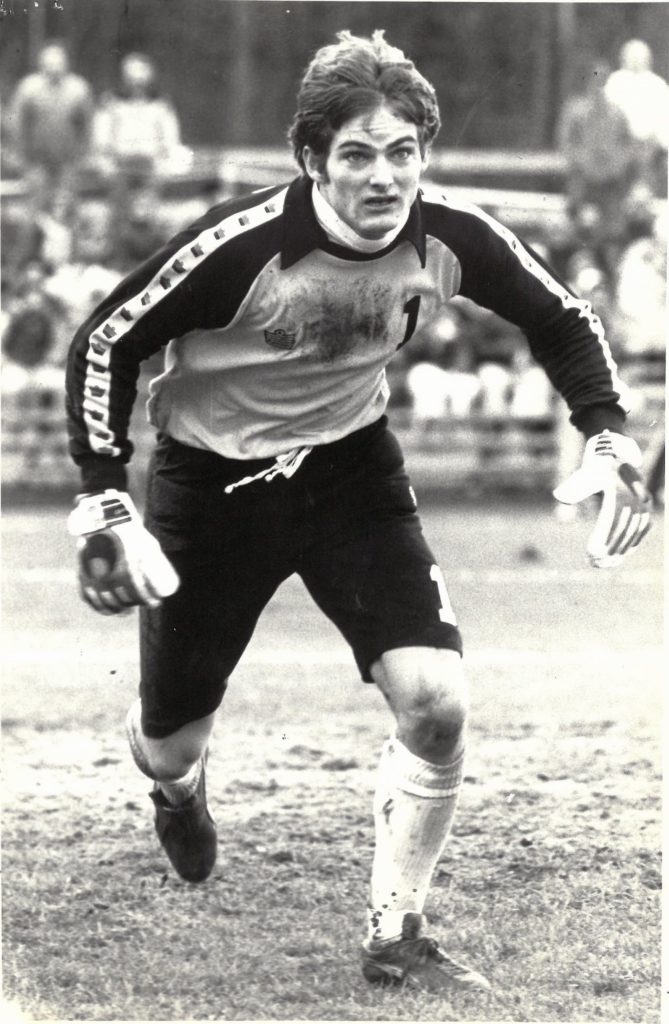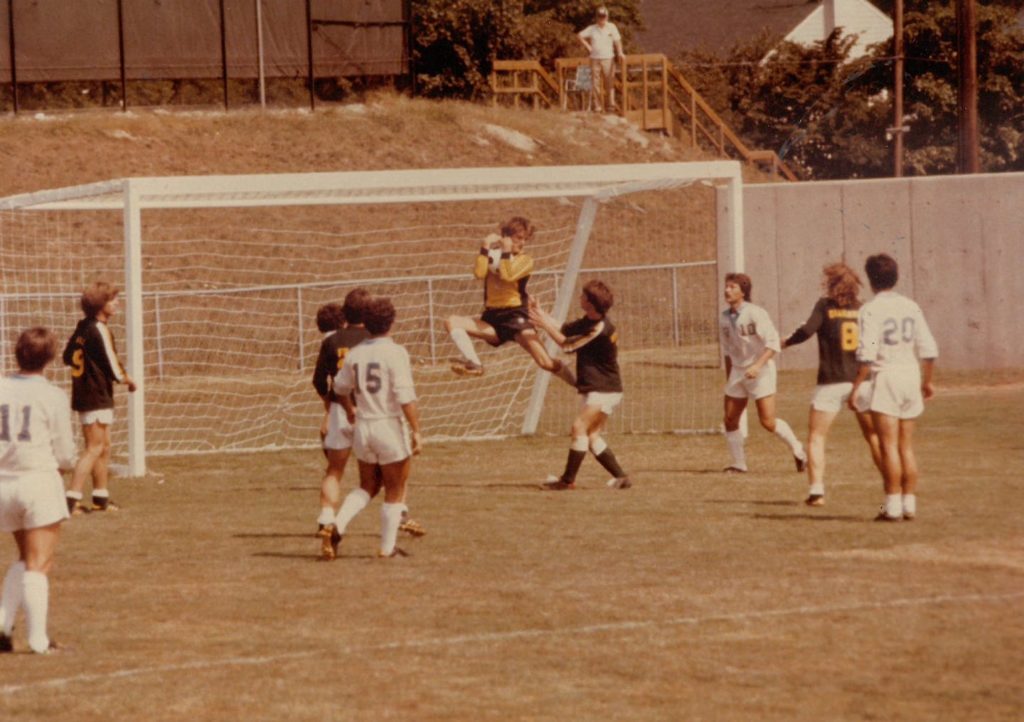Planning for a Strong Future and Growth – Part I
When Chris Moore stepped down as the CEO of US Youth Soccer (USYS) to join the Positive Coaching Alliance, everyone wondered who would assume the leadership role he left vacant. Now, after nearly two months as CEO, we chatted with USYS’s new leader Skip Gilbert on what he views as the challenges ahead for the largest youth sports organization.
Skip Gilbert became the new Chief Executive Officer of US Youth Soccer (USYS) in December 2019 and quickly immersed himself in the leadership role at the largest youth sports organization in America.
“Youth sports today has become a money machine.”
Skip Gilbert, Chief Executive Officer of US Youth Soccer (USYS)
A former pro who played for the Tampa Bay Rowdies in the NASL, Gilbert’s passion for soccer has spanned decades. A goalkeeper, Gilbert trained at Sheffield United in England as well as other clubs in Holland, and Hong Kong after playing at the University of Vermont and being two-time All-American.

Now, as the leader of USYS, with its more than 3 million members, Gilbert has settled into the role and begun to craft his vision for the future of the national organization.
With extensive executive management experience with the U.S. Anti-Doping Agency, the US Tennis Association, USA Triathlon, USA Swimming, U.S. Soccer, and as Chairman of the National Governing Bodies Council (NGBC), the USYS board of directors felt Gilbert was the right candidate at the right time.
US Youth Soccer Board Chairman Dr. Pete Zopfi has said, “We’re confident that Skip’s leadership and diverse skill set will enhance USYS capabilities across the board.”
As a former player, Gilbert has a deep understanding of the beautiful game and has shared in its rich heritage — guarding the net as well the interests of the players in the boardroom.

SoccerToday Interview with US Youth Soccer CEO Skip Gilbert
Diane Scavuzzo: Now that you have been the CEO of US Youth Soccer for nearly two months, what do you see as the biggest challenge?
Skip Gilbert: Realistically, US Youth Soccer is built on the strength of the 55 State Associations — we all are working in unison to be able to grow the game in America. When you have 55 autonomous organizations that are all moving to some degree in unison, but also doing it with the own flavor based on the needs of their geographic region, and where you have differences of opinions, with different optics — you have different priorities.
Diane Scavuzzo: Skip, so one of the challenges will be getting all the State Associations on the same page?
Skip Gilbert: Yes, and to build trust. In order for any national association to move forward, it’s really important to get the trust of all of the State Associations — their staff, executive directors, presidents. Everyone needs to know that you’re doing everything in the best interest of the game.
So, from my perspective, not knowing anybody coming into this organization, it’s really important to be able to earn trust right off the bat, to have people understand what the vision is for the organization and agree that this is exactly the direction we want to go — we need to go.
Diane Scavuzzo: What is the mission of US Youth Soccer’s national office?
Skip Gilbert: Obviously to support our State Associations, but it’s also to enable every player, every coach, every referee, and to some degree, all the parents to fulfill their goals.
Soccer is a simple game. You pass, you trap, you shoot, you save. I believe that there are times where adults make the game too complicated.
Our focus is to help create a pathway for the good of the game, so players can get the most they can possibly get out of playing soccer.
Diane Scavuzzo: Do you believe that you have 55 members or 3 million?
Skip Gilbert: At the end of the day, when you look at all our members, it’s the full US Youth Soccer membership of 3.2 million players, coaches, referees — So everything we do has to be with the players in mind.
Diane Scavuzzo: What do you see as the greatest challenge in youth soccer today?
Skip Gilbert: I think the greatest challenge right now — and this is not just in soccer — that it has become a money machine.
And that sometimes personal agendas will cloud professional decisions — I worry that decisions are being made that will cost parents more and more money to put their kids to the game.
Sure there is a socioeconomic group that can afford to pay to play model, but what about all those kids whose parents can’t?
Are we leaving kids behind? Are we preventing kids who can’t pay from getting on the field?
So much focus is on the top 10% to 15% of the pyramid — I ask, “Are we doing everything we can to ensure that the base of the pyramid is not just as strong as it can be but that it continues to grow and expand?”
If the base of the pyramid starts to shrink, then the top is nowhere near as high as it could be. Therefore, are we getting the best players possible on whatever that path they chose? Obviously not. So we absolutely have to build the base of the pyramid so it just gets stronger and wider.
Diane Scavuzzo: Do you see the base of the pyramid as recreational players or just young players?
Skip Gilbert: To be honest, I’d love to get the term recreational player out of our vernacular.
I think the word ‘Recreational’ puts a negative connotation on an athlete.
We want to get more kids involved in the game, whatever path — if they’re just in it to have fun or want to become a serious competitive player.
If you look at the ecosystem within soccer, kids walk away from the game when they don’t feel they’re good enough.
Are these kids walking away disillusioned?
Do they want to go see the National Team play or go to an MLS, NWSL, USL or any professional soccer match? Are they going to be fans of the game when they become adults and can buy tickets to games?
If we’re not careful and don’t build up the pathway for players who just want to have fun until they get to college, we’re potentially losing a whole market of fans that could make soccer not just a sport, but also a lifetime activity for health and wellness benefits.
Soccer could be a lifestyle in America — and when I say lifestyle, I’ll use the NFL as a great example. 102 million total viewers tuned in for Super Bowl LIV between the Kansas City Chiefs and the San Francisco 49ers. The discussion around the country was should the Super Bowl still be on Sundays because, from an employee perspective, everybody wants Monday off. So should it be a national holiday? That’s a lifestyle.
When the MLS Cup, NWSL Cup or the FIFA World Cup is on, we want the entire country to watch. We want soccer to be a lifestyle.
Diane Scavuzzo: What are your thoughts on the competition between US Youth Soccer and US Club?
Skip Gilbert: There’s an awful lot of talk about the competitiveness between US Youth Soccer and other organizations, and you can easily point fingers but at the end of the day, we need to make sure that every system within our infrastructure, from our national programs to the state associations, and the clubs are doing a great job.
Instead of focusing on the fact that everybody is cannibalizing each other, we need to be confident that we’re putting out the absolute best product we possibly can.
Our focus has to be on the kids who are playing in US Youth and make sure they are succeeding and we’re telling success stories.
Part II of SKIP GILBERT ON BEING THE NEW CEO OF US YOUTH SOCCER AND OUR FUTURE – Planning for a Strong Future and Growth will be published next week covering Skip Gilbert’s plan for generating new sponsorship for USYS and the 55 State Associations.





